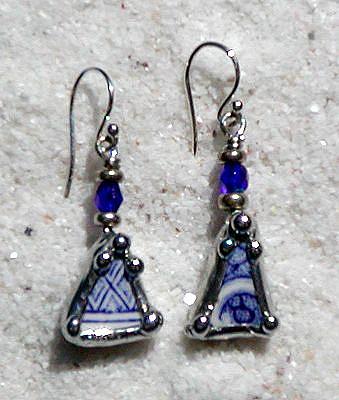Two birds flying high,
A Chinese vessel, sailing by.
A bridge with three men, sometimes four,
A willow tree, hanging o'er.
A Chinese temple, there it stands,
Built upon the river sands.
An apple tree, with apples on,
A crooked fence to end my song.
A Chinese vessel, sailing by.
A bridge with three men, sometimes four,
A willow tree, hanging o'er.
A Chinese temple, there it stands,
Built upon the river sands.
An apple tree, with apples on,
A crooked fence to end my song.
It's no secret that I have a love affair with Steampunk and a Victorian aesthetic. My husband, on the other hand, is very fond of the simple elegance of Asian (particularly Japanese-inspired) furnishings. Where do two such opposite tastes combine? Victorian Orientalism, of course.
Starting in the 18th Century, Orientalism was a term used to describe the study of the East, most usually referring pretty much to any part of the globe that wasn't Europe or the Americas, particularly China, Japan, and other parts of East Asia, but also extending to India, the Middle East, and Northern Africa. Different areas had their own, unique highpoint with European culture, leading to all sorts of cultural offerings based on a romanticized idea of that particular land. Orientalism moved waves, starting with fascination with the Middle East and India, and by the end of the 19th Century exemplified by the story of the Gilbert and Sullivan Operetta, The Mikado.
As an aside, the 1999 movie Topsy-Turvy deals with just that subject, focusing on the eccentricity of the author and composer, as well as the difficulty of the original cast in grasping an attempt (shocking for the era) to make the operetta in question actually Japanese in flavor, rather then classic theater tropes of the day, including ethnic stereotypes, dressed up in a new wrapper(and yes, Miss Sixpence-please did, in fact exist, although unfortunately little to nothing is known about her).
Back to China. The famous Blue Willow Pattern shown at the top, along with its famous little poem, is actually not a Chinese pattern, but was invented in Shropshire in 1780. Minor changes have been made by various makers, leading to a story sprouting up about a pair of star-crossed young lovers, who are eventually turned into the birds at the top of the plate.
Blue Willow China had a falling out of popularity in the later half of the last Century, but has now come back, stronger then ever. A lucky thing for those like myself, who enjoy the ease with which it can mix and match with virtually anything, being dressed up or down as needed.
Here are some great ideas for using blue and white china, as well as mixing Orientalist ideas into the kitchen:

Blue Willow in the Butler's Pantry via Country Living...great way to mix up themes and colors.

A great example of a more eclectic and quirky collection, compared to above. From House to Home.
Broken China Earrings...not kitchen, but I had to share.

Teapot from the Atlanta Antique Gallery
Tea Tray made with broken china at the blot Pennello Lane. This one just got added to my personal to-do list.

India Blue tablecloth at Blithe.

Tablecloth by Indian Garden Company, available at Not On The High Street.
Who says Steampunk has to be brown?
 |
| William McGregor Paxton, The New Necklace |
Starting in the 18th Century, Orientalism was a term used to describe the study of the East, most usually referring pretty much to any part of the globe that wasn't Europe or the Americas, particularly China, Japan, and other parts of East Asia, but also extending to India, the Middle East, and Northern Africa. Different areas had their own, unique highpoint with European culture, leading to all sorts of cultural offerings based on a romanticized idea of that particular land. Orientalism moved waves, starting with fascination with the Middle East and India, and by the end of the 19th Century exemplified by the story of the Gilbert and Sullivan Operetta, The Mikado.
As an aside, the 1999 movie Topsy-Turvy deals with just that subject, focusing on the eccentricity of the author and composer, as well as the difficulty of the original cast in grasping an attempt (shocking for the era) to make the operetta in question actually Japanese in flavor, rather then classic theater tropes of the day, including ethnic stereotypes, dressed up in a new wrapper(and yes, Miss Sixpence-please did, in fact exist, although unfortunately little to nothing is known about her).
Back to China. The famous Blue Willow Pattern shown at the top, along with its famous little poem, is actually not a Chinese pattern, but was invented in Shropshire in 1780. Minor changes have been made by various makers, leading to a story sprouting up about a pair of star-crossed young lovers, who are eventually turned into the birds at the top of the plate.
Blue Willow China had a falling out of popularity in the later half of the last Century, but has now come back, stronger then ever. A lucky thing for those like myself, who enjoy the ease with which it can mix and match with virtually anything, being dressed up or down as needed.
Here are some great ideas for using blue and white china, as well as mixing Orientalist ideas into the kitchen:

Blue Willow in the Butler's Pantry via Country Living...great way to mix up themes and colors.

A great example of a more eclectic and quirky collection, compared to above. From House to Home.
Broken China Earrings...not kitchen, but I had to share.

Teapot from the Atlanta Antique Gallery
Tea Tray made with broken china at the blot Pennello Lane. This one just got added to my personal to-do list.

India Blue tablecloth at Blithe.

Tablecloth by Indian Garden Company, available at Not On The High Street.
Who says Steampunk has to be brown?










